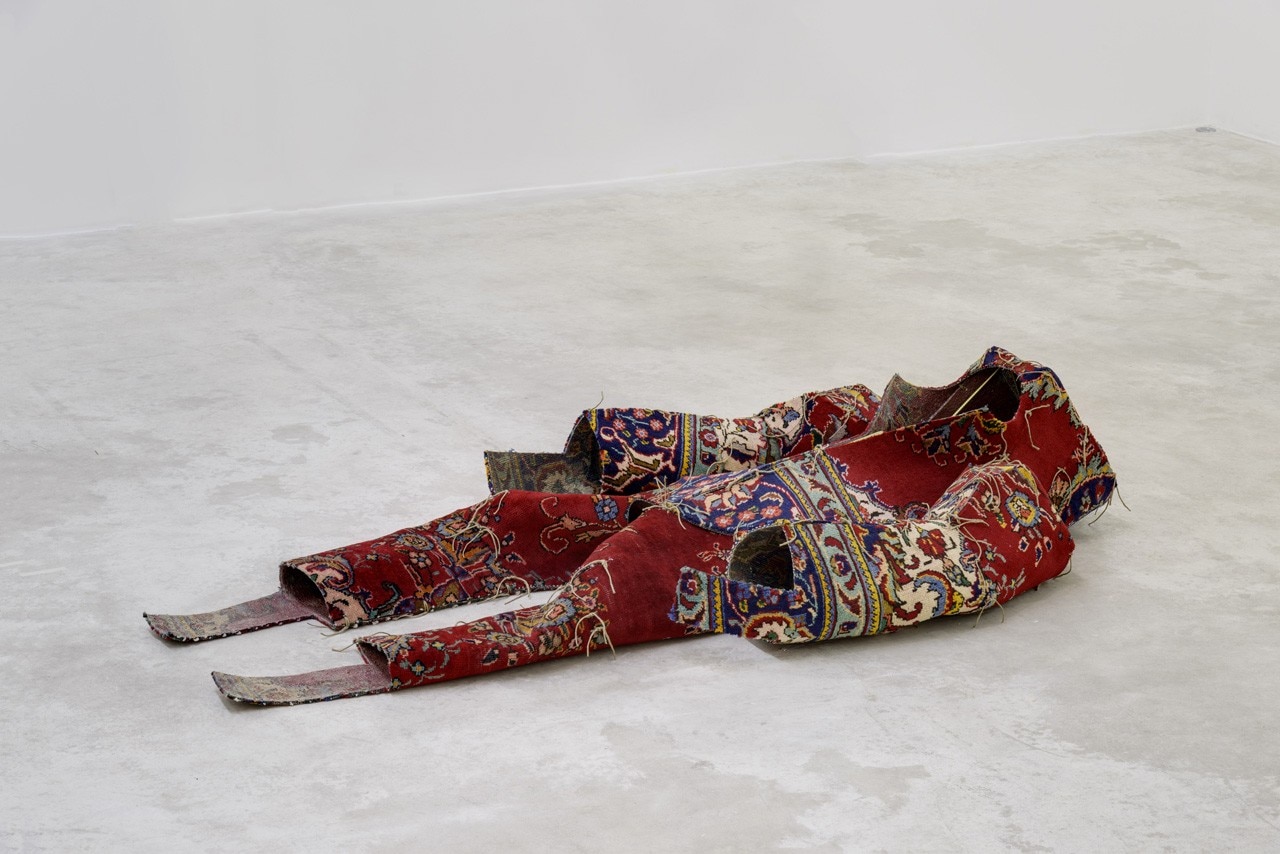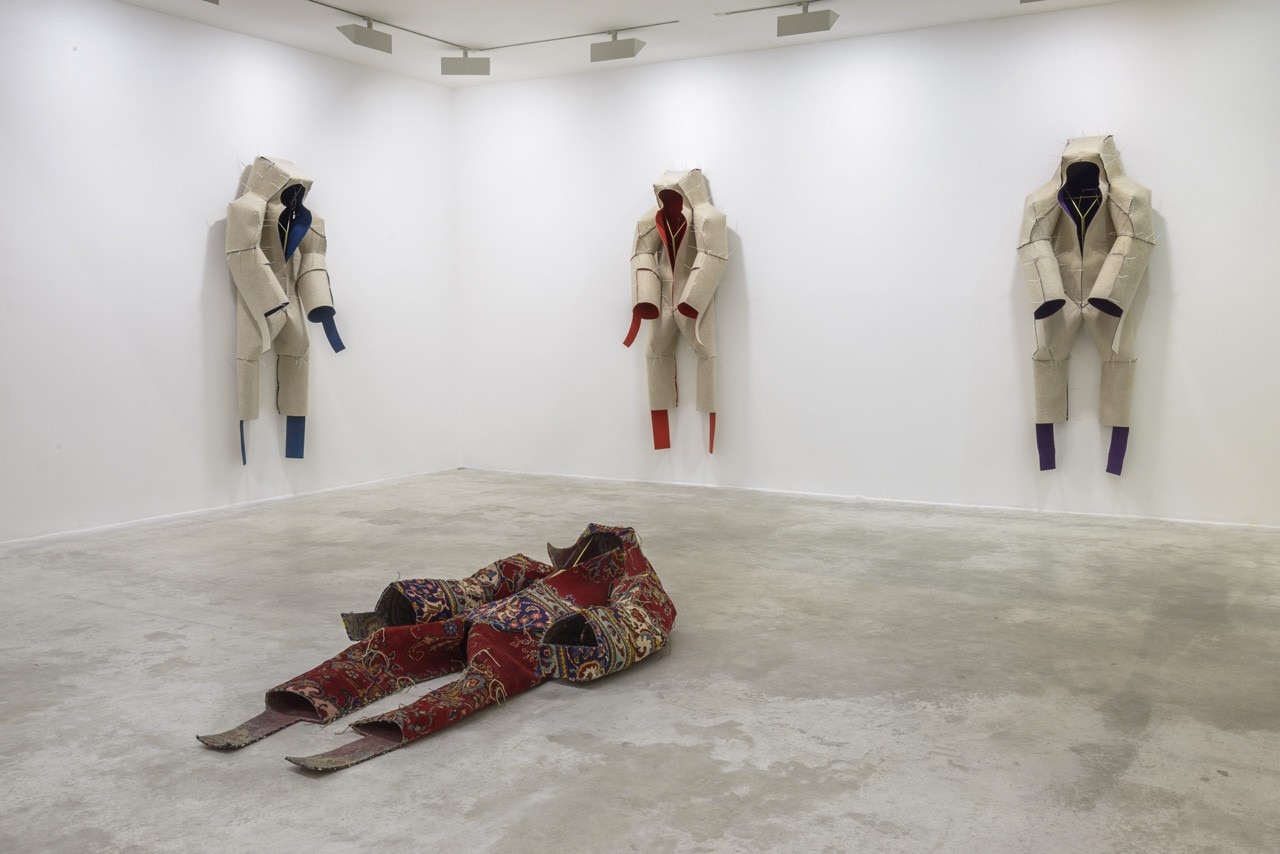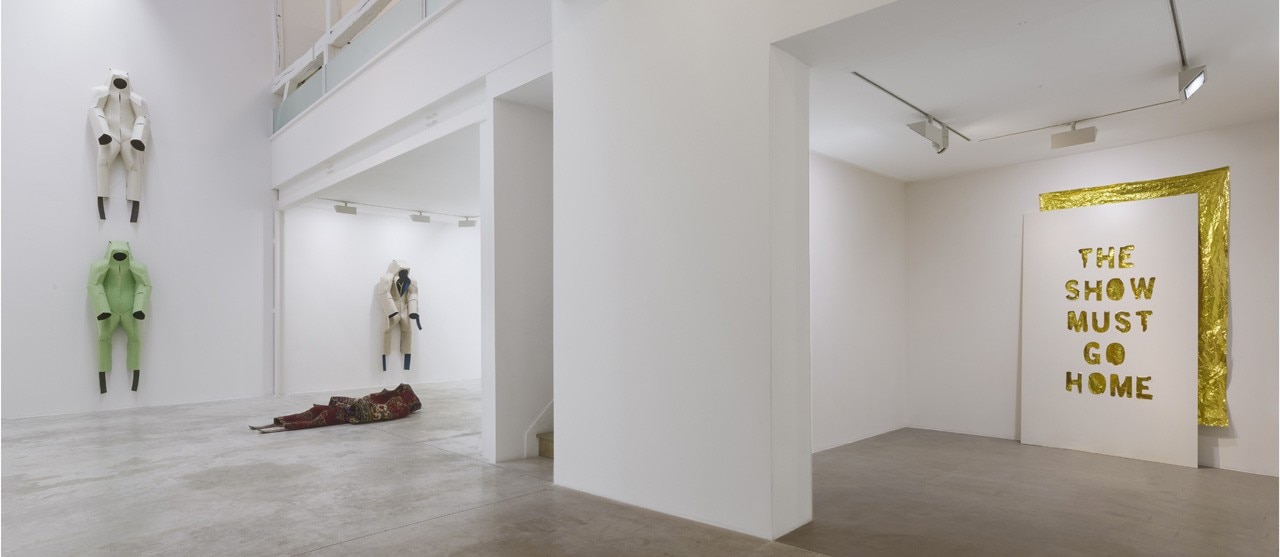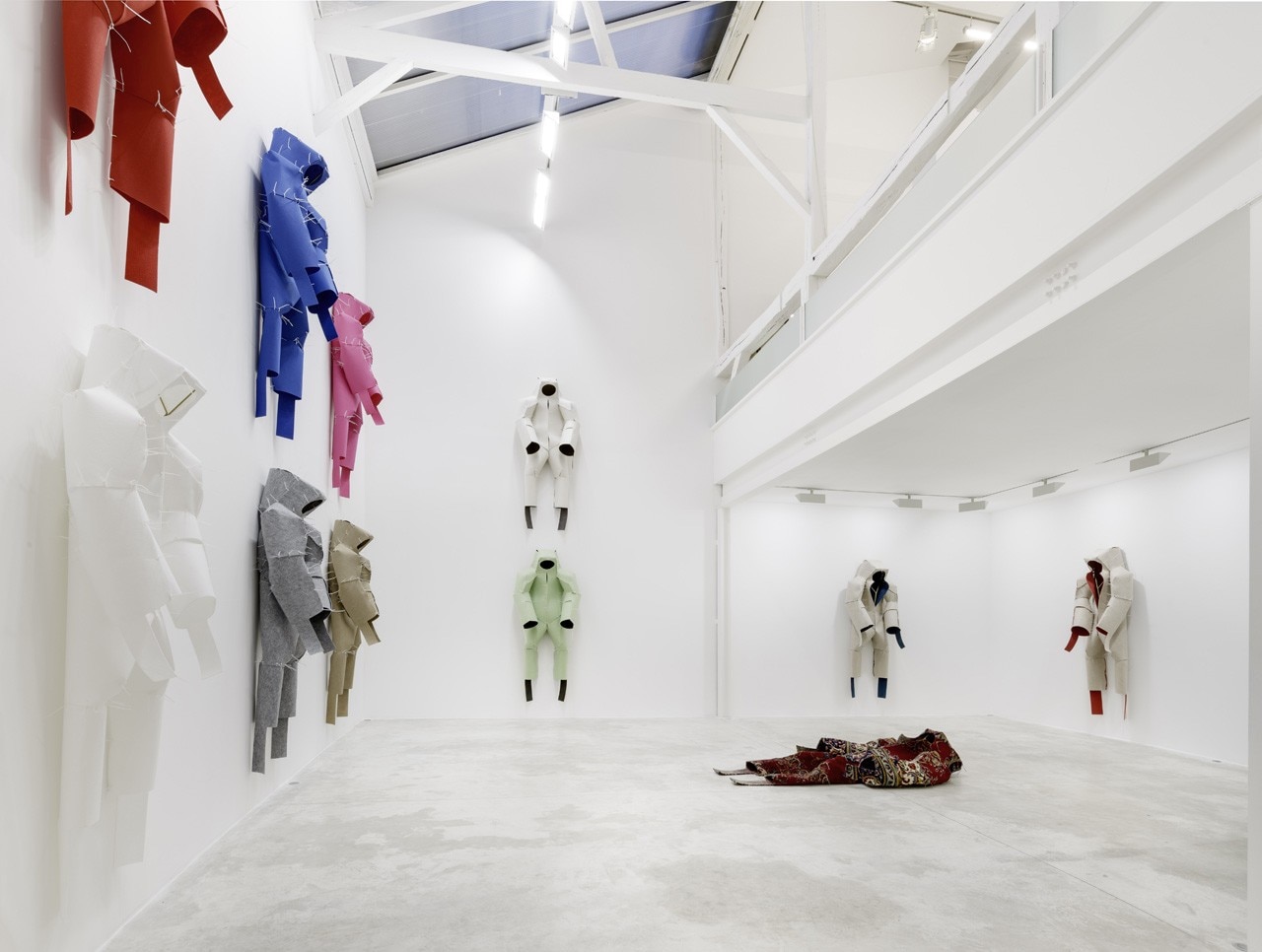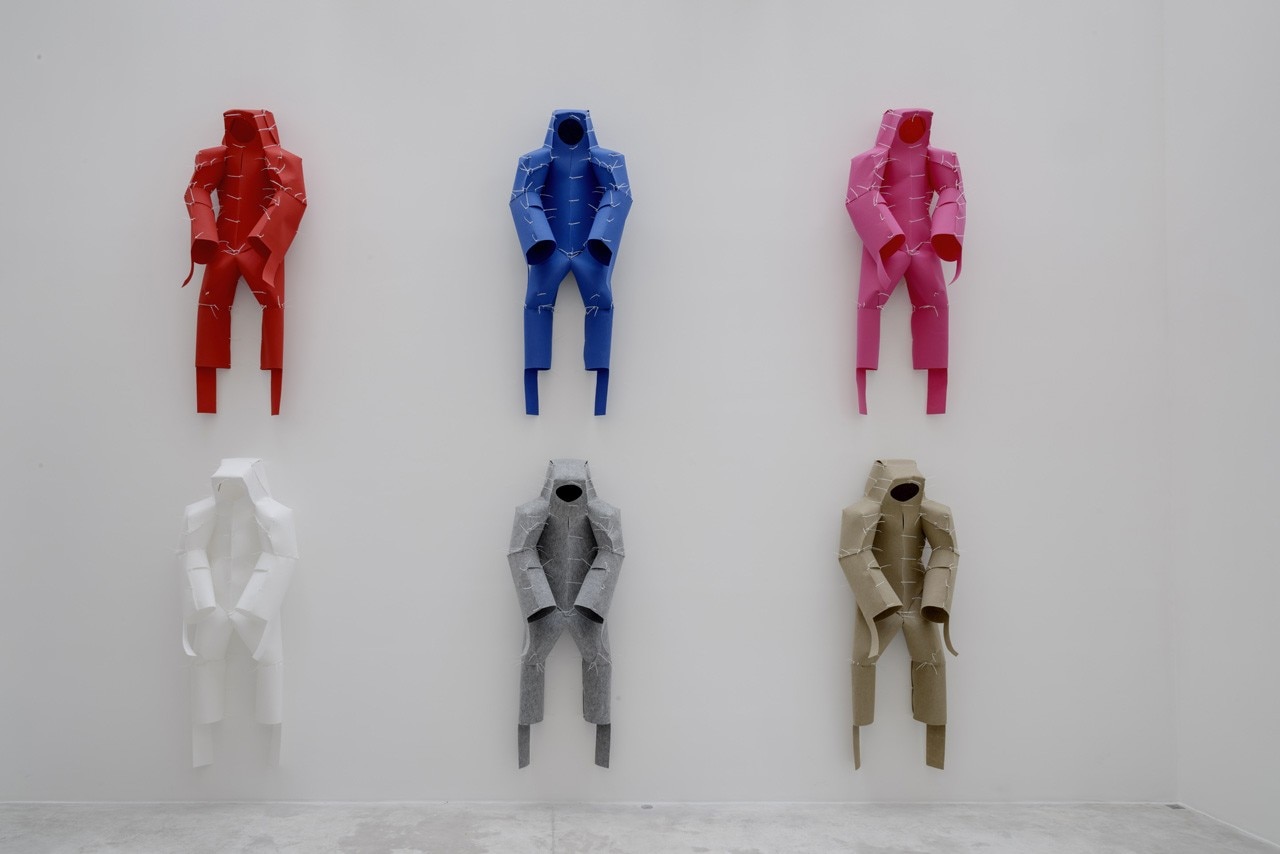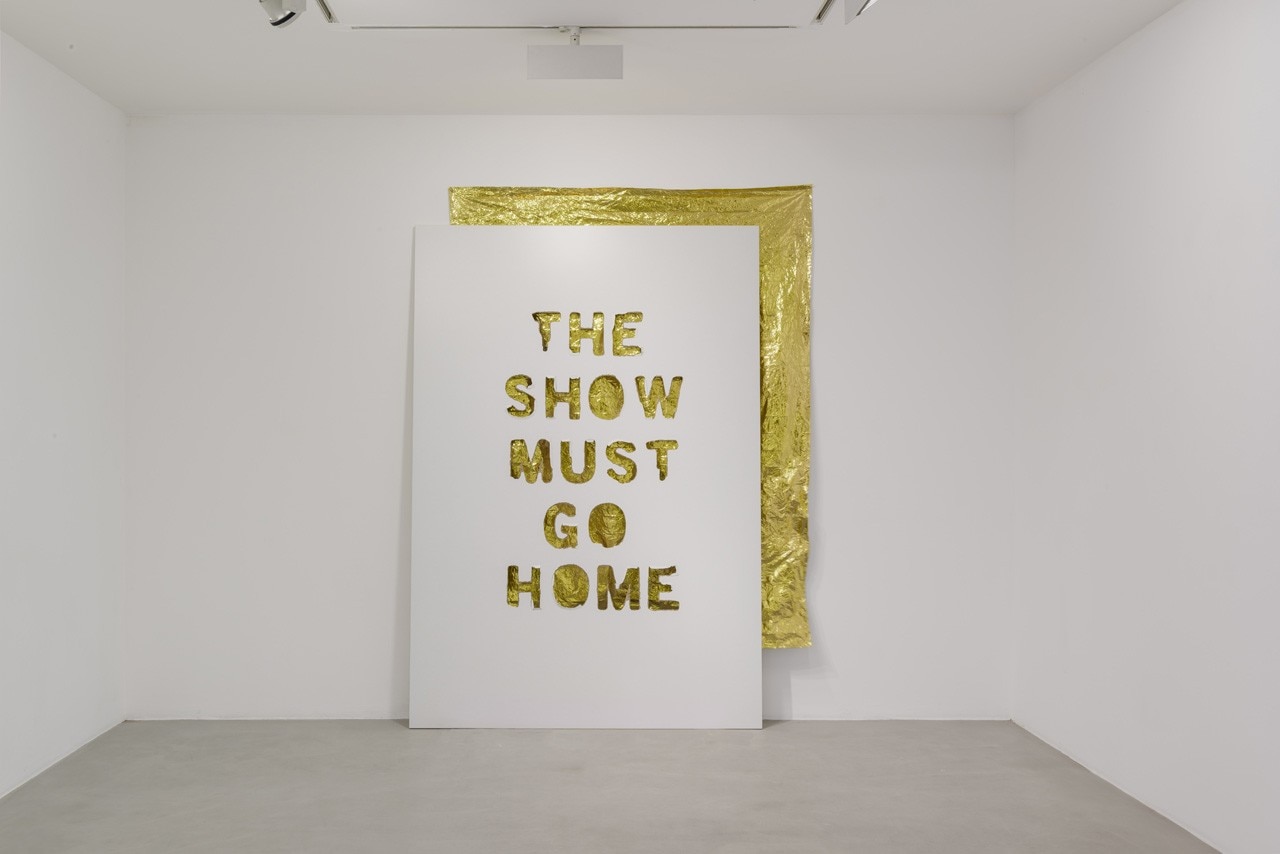
Like skins discarded in an abrupt cultural mutation, this prêt à porter cut out of carpet and other materials such as felt and polystyrene is a catalogue of living whims for an urban humanity to which only the concept of comfort remains dear. It is hard not to imagine a species that no longer knows how to live in its body, constantly occupied as it is with inner/outer conflict.
These pieces of armour draw lofty references such as Beuys’ felt and Absalon’s Cells but these uniforms clearly do not refer to a sense of protection or a space of resistance. The one on the floor, in particular, brings to mind the carpets used to roll up corpses or under which the ashes are hidden but this only occurs when you exercise an imaginary gore and detached irony that seem an unconscious Faustino reference.
